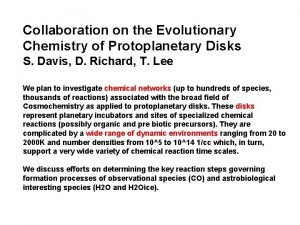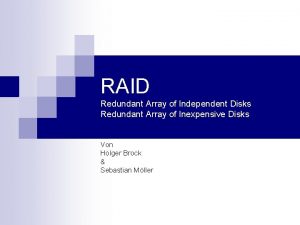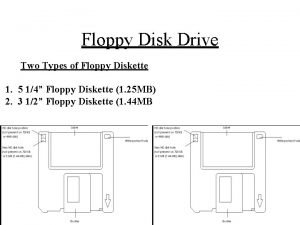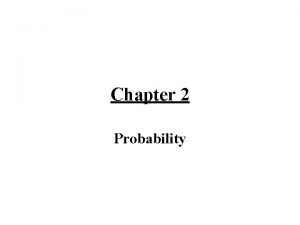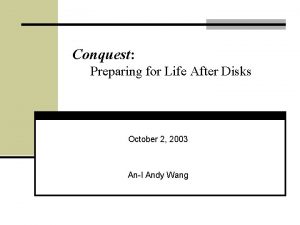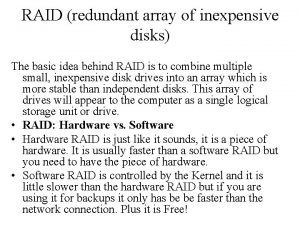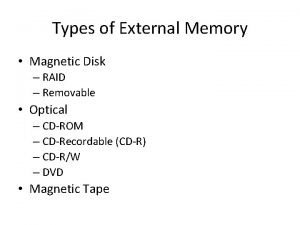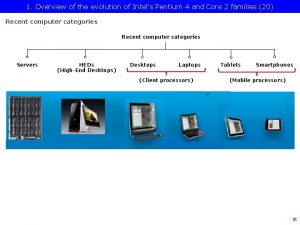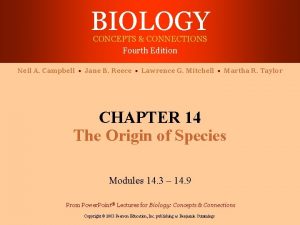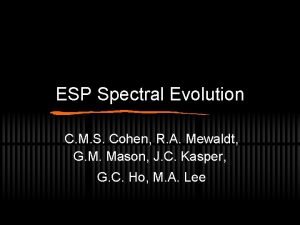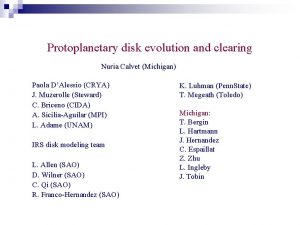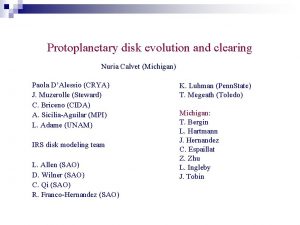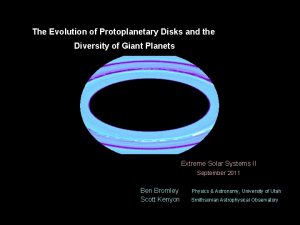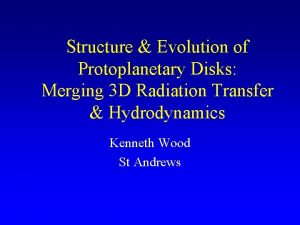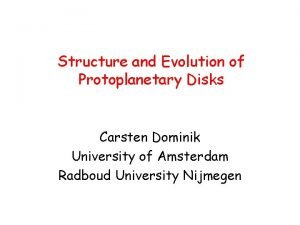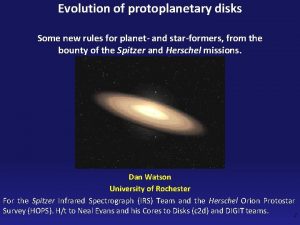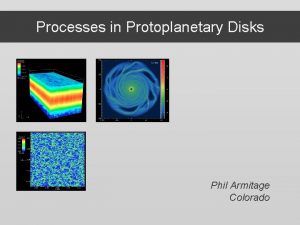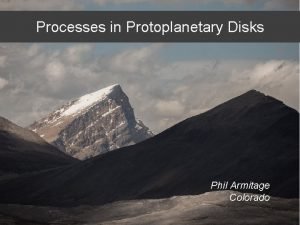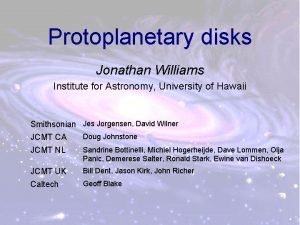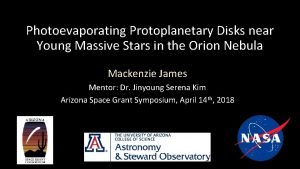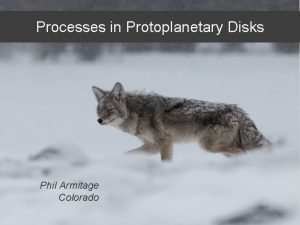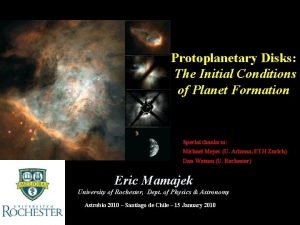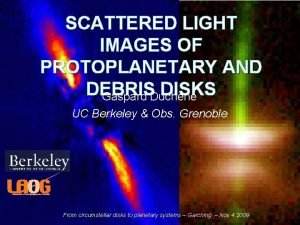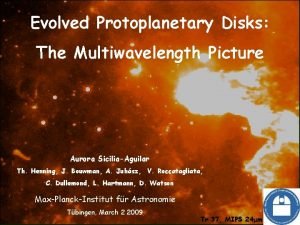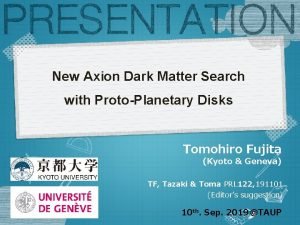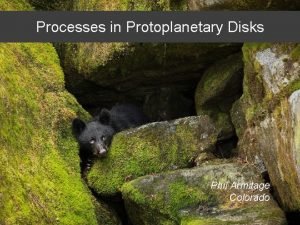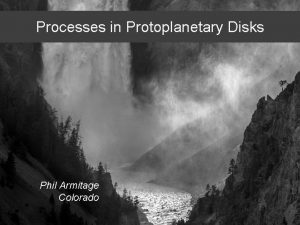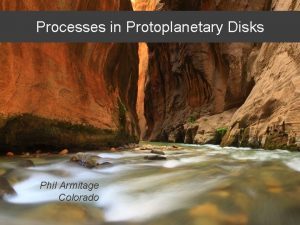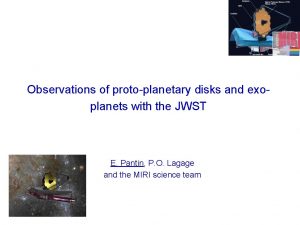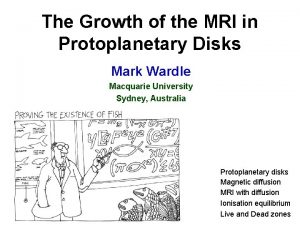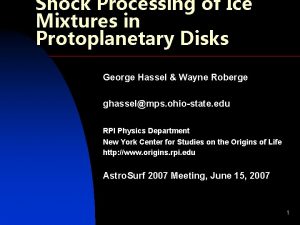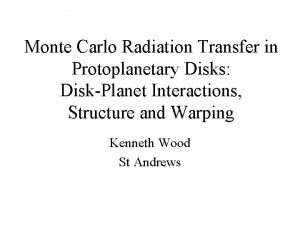Evolution of protoplanetary disks N Calvet SAO C































- Slides: 31

Evolution of protoplanetary disks N. Calvet (SAO) C. Briceno (CIDA) P. D’Alessio (UNAM) J. Hernandez (CIDA) L. Hartmann (SAO) J. Muzerolle (Steward Observatory) A. Sicilia-Aguilar (SAO)

Disk evolution • Disks evolve from optically thick dust+gas configurations to mostly solids debris disks HK Tau, Stapelfeldt et al. 1998 Characteristic timescales Physical processes

Disk evolution • Evolution from optically thick dust+gas configurations formed in the collapse of rotating molecular cores to debris disks with mostly solids to planetary systems • First: grain growth from mm studies (Beckwith & Sargent 1991; Dutrey et al. 1996) • Much research in recent years, SPITZER • Evolution of gas and dust (~ 1% of total)

Gas: accretion onto star Inner disk is truncated by stellar magnetic field at ~ 3 -5 R*. Matter flows onto star following field lines – magnetospheric accretion flow Hartmann 1998

Evidence for magnetospheric accretion BP Tau Model Redshifted absorption if right inclination Redshifted absorption Broad emission lines (H , Brg, etc. ) formed in magnetospheric flow Muzerolle et al. 1998 a, b, c, 2001 Magnetospheric flow

Evidence for magnetospheric accretion Excess emission/veiling: consistent with accretion shock emission Veiling Accretion shock Excess Calvet & Gullbring 1998; Gullbring et al. 2000; Calvet et al. 2004

Accretion luminosity and mass accretion rate Excess emission over photosphere ~ Lacc = G M (d. M/dt) / R Gullbring et al. (1998)

Evolution of mass accretion rate for Classical T Tauri stars (~ K 5 -M 3) Viscous evolution - Gas . 50. 23. 12 Hartmann et al. (1998), Muzerolle et al. (2001), Calvet et al. (2005) Fraction of accreting objects decreases with time (LAH talk) What stops accretion?

Dust evolution in inner disk • Good knowledge of timescales for dust evolution in inner disks – even more with SPITZER data (LAH ‘s talk) • What is happening to the dust? Hillenbrand, Carpenter, & Meyer 2005

Decrease of excess emission with age Near-IR colors of older population much lower Taurus, 1 -2 Myr Ori OB 1 b, 3 -5 Myr Briceno et al 2005 Calvet et al. 2005

Decrease of excess emission with age SEDs of stars in Tr 37 ~ 3 Myr IRAC data Weaker than median of Taurus Accreting stars (C) without excesses Weak TTS (W) with excess Sicilia-Aguilar et al 2005 Taurus median Phot

Present picture of inner disk Near-IR emission mostly from wall at dust destruction radius

Excess decreases with age • large contribucion from wall to near-IR • decrease of d. M/dt or • decrease of wall emitting area => height Art by Luis Belerique & Rui Azevedo

Grain growth in disks Median SED of Taurus quartiles amax = 1 mm No silicate emission D’Alessio et al 2001 ISM Models with dust and gas distributed uniformly

Spitzer/IRS spectra of T Tauri stars Midplane of optically thin outer disk silicate feature emission –> small grains Hot upper layers of optically thick inner disk surface Calvet et al 1991; Meyer et al 2000 SEDs -> large grains Grain Growth and Settling Forrest et al 2004

Settling of solids towards the midplane: effects on SED Depletion of upper layers: upp/ st • Lower opacity of upper layers • Decrease capture of energy • Lower T, less emission D’Alessio et al 2005 Furlan et al 2005

Settling of solids toward midplane Depletion of upper layers: upp/ st Furlan et al. 2005

Settling of solids toward midplane diameter range of i’s Furlan et al. 2005

Dust growth and settling • As disk ages, dust growths and settles toward midplane as expected from dust evolution theories t=0 Upper layers get depleted Observations agree with expectations, (although problem with timescales) Population of big grains at midplane Weidenschilling 1997

Settling of solids: TW Hya 3. 5 cm flux ~ constant => Dust emission Jet/wind? Northermal emission? Wilner et al. 2005

Wilner et al. 2005 Settling: bimodal grain size distribution Small + 57 mm Weidenschilling 1997 ~ 1/R

Inner disk clearing • Weak or absent near-IR excess in TW Hya: clearing of inner disk regions • ‘Wall’ at ~ 4 AU – edge of outer disk • Inner disk: gas and small amount of micron-size dust • Large solids - with low near. IR opacity - may be in inner disk Wall emission, T~ 130 K Calvet et al 2002

Inner disk clearing • Tidal truncation by planet • Hydrodynamical simulations+Montecarlo transfer – SED consistent with gap created and maintained by planet – GM Aur: ~ 2 MJ at ~ 2. 5 AU – Rice et al. 2003 SED depends on mass of planet (and Reynolds number) 21 MJ 1. 7 MJ Planet formation may explain why/how inner disk eventually disappears (near-IR excess and accretion) 0. 085 MJ 43 MJ

Inner disk clearing: planet(s)? Transitional disks Taurus median Wall of optically thick disk = outer edge of gap at a few AU ● wall Bryden et al 1999 Inner gas disk with minute amount of small dust – silicate feature but little near IR excess, T= Tthin Photosphere ● , Bergin et al 2004

The FUV - disk structure connection • Emission “bump” in STIS spectra of disks in transition • lack of spatial extent suggests this is inner disk emission Bergin et al 2004

Ly pumped H 2 Emission + Electron Impact Excitation of H 2? (fast e’s due to X-rays) Bergin et al 2004 models of H. Abgrall and E. Roueff • link between X-ray and UV radiation -- evidence for internally generated UV field • Gas in inner disk – planet forming region • JN’s talk

Inner disk clearing Spectra from IRS on board SPITZER TW Hya, ~ 4 AU ~ 10 Myr Inner disk Uchida et al. 2004 Co. Ku Tau 4, ~ 10 AU ~ 2 Myr Forrest et al. 2004; D’Alessio et al. 2005 No inner disk, WTTS

Inner disk clearing Co. Ku Tau 4, wall at ~ 10 AU No inner disk, no accretion, no near-IR excess photosphere D’Alessio et al. 2005 Planet-disk system with planet mass of 0. 1 Mjup for Co. Ku Tau 4 Quillen et al. 2004

Summary • Progress in understanding disk evolution in 1 – 10 Myr range • Good handle on WHEN, begining to understand HOW • SPITZER data crucial • Disks evolve accreting mass onto star and dust growing and settling to midplane • Accumulation of planetesimals begins at midplane, followed by gas accretion onto protoplanet • Giant planet(s) begins to form, gap, inner disk into star • What happens to material in outer disk • Theoretical timescales • Mass dependence

Disks around intermediate mass stars dissipate faster Hernandez et al 2005

Mass accretion rate vs stellar mass Muzerolle et al 2004
 Protoplanetary disk
Protoplanetary disk Modèle gravitationnel calvet
Modèle gravitationnel calvet Joan calvet fontova
Joan calvet fontova Caroline calvet montpellier
Caroline calvet montpellier Calvet
Calvet Redundant arrays of independent disks
Redundant arrays of independent disks Redundant array of independent disks
Redundant array of independent disks Types of floppy diskette
Types of floppy diskette Probability learning objectives
Probability learning objectives Tower of hanoi 4 disks
Tower of hanoi 4 disks Conquest data disks
Conquest data disks What is a magnetic storage device
What is a magnetic storage device Azure managed disks
Azure managed disks Basics of raid
Basics of raid Fixed-head magnetic disk storage
Fixed-head magnetic disk storage Unraid nedir
Unraid nedir Disks and tapes can be stored ------- a library. eng101
Disks and tapes can be stored ------- a library. eng101 A mechanism that spins reads and writes disks
A mechanism that spins reads and writes disks Bga1440
Bga1440 Animal evolution chart
Animal evolution chart Terrain evolution
Terrain evolution Evolution of music players
Evolution of music players Evolution fact or fiction
Evolution fact or fiction Connecting the concepts evolution
Connecting the concepts evolution Wurcan
Wurcan Evolution cms
Evolution cms Evolution of database technology
Evolution of database technology Mechanisms of evolution
Mechanisms of evolution Evolution des pcs
Evolution des pcs Lamarck theory of evolution notes
Lamarck theory of evolution notes Pbs evolution library
Pbs evolution library Plants natural selection
Plants natural selection
